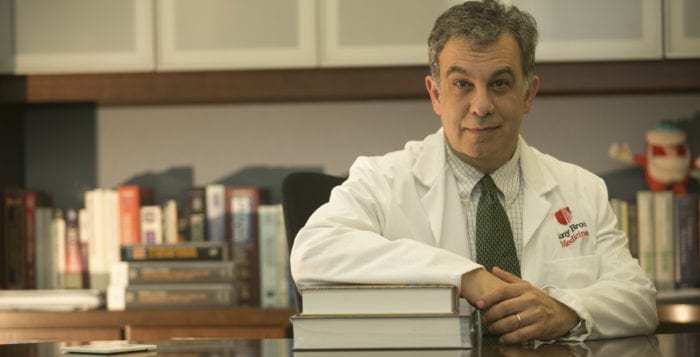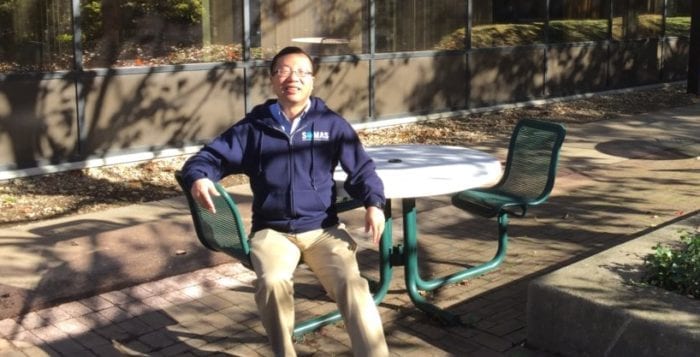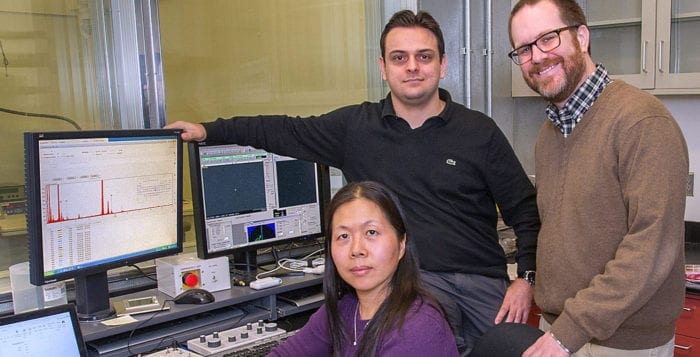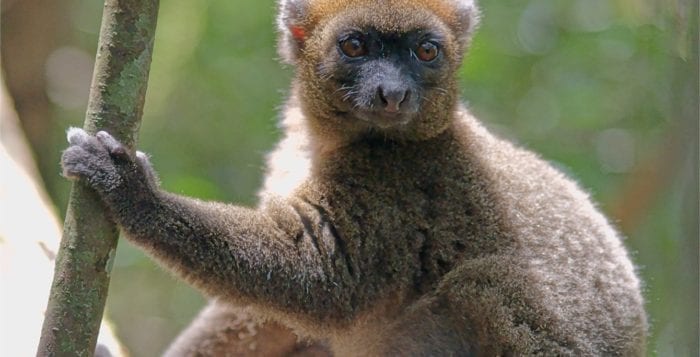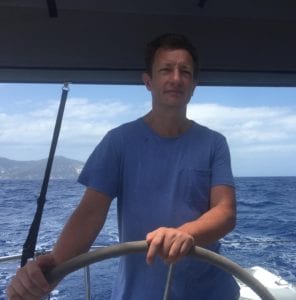By Daniel Dunaief
In the battle against cancer, doctors and scientists use targeted drugs to treat the disease. They also employ radiation, starve it of the nutrients it might need to grow, block key metabolic pathways in its development and encourage the immune system to attack these genetically misdirected cells that grow out of control. A developing field in this battle includes the use of computers, artificial intelligence and math.
Joel Saltz, the Cherith Chair of Biomedical Informatics at Stony Brook University, recently teamed up with researchers from Emory University and the University of Arkansas and won an $8 million grant from the National Cancer Institute to coordinate radiology and pathology information in the battle against cancer.
“By gathering more information, researchers can understand better what’s happening, what might happen and how best to treat cancer,” Saltz said. The grant will be divided equally among the three institutions over the course of five years. Saltz will be collaborating with Ashish Sharma at Emory and Fred Prior at the University of Arkansas.
Saltz has been working with Sharma for several years, when the two were at Ohio State and then moved together to Emory. This is Saltz’s first major grant with Prior, although the two have also known each other for years and have been working in the same NCI program.
Prior has considerable expertise in radiology, while Saltz is adding his pathology background to the mix. Radiology has used digital imaging for a long time and, until recently, pathology data was collected on glass slides. Saltz is helping bring digital pathology to this effort.
“We had been on panels for many years with NCI saying we need to do this sort of” collaboration, Saltz added, and now the trio is putting that idea to work.
Yusuf Hannun, the director of the Cancer Center at Stony Brook, sees the potential for this type of collaboration. “This is a very important effort that builds on several areas of outstanding strength” at the Cancer Center, the director explained in an email.
Exploring information from digitized radiology and pathology samples will “allow us to understand individual cancers at a much higher level. It should improve accuracy in diagnosis [and offer an] ability to provide better informed prognosis” and individual therapy, Hannun continued.
Researchers on the current grant, which is part of the Information Technology for Cancer Research, plan to expand resources for integrative imaging studies, build on the capacity to acquire high-quality data collections, dedicate resources to support reproducible research and increase community engagement.
Saltz will use the portion of the Stony Brook funds to develop new software integration tools and curation and work with researchers to analyze and understand their patient data. Over time, he will also hire additional staff to build out this expertise. He has collaborated with Kenneth Shroyer, chair of the Department of Pathology at Stony Brook, on pancreatic and ovarian cancer and on breast cancer with pathology professor Patricia Thompson, who is also director of basic science at the Cancer Center. Shroyer “plays an important role” in all his research, Saltz said.
“Digital pathology will supplement that art of surgical pathology with quantitative data, to improve diagnostic accuracy,” Shroyer wrote in an email, which will “inform decisions on how to optimize therapeutic intervention for the treatment of cancer and many other diseases.”
Shroyer interviewed Saltz before Stony Brook hired its first bioinformatics chair. “Based on his research focus, including his pioneering efforts in digital pathology, he clearly stood out as my top choice.”
Saltz and Shroyer have generated maps of patterns for immune cells in tumors. “We and others have shown that these are related to how patients respond to treatment,” Saltz said. He described his work with these scientists as “basic clinical cancer research,” in which he develops and enhances technology to understand various types of cancer.
This particular grant is “more about technology and curation,” Saltz said. “People are developing new algorithms, in artificial intelligence and machine learning.” By making this information available, scientists from around the world who have insights into the specific types of cancer can use it to predict responses to treatment and develop and refine the algorithms that underlie the computer analysis.
Using specific cancers from radiology and pathology studies is akin to sitting in a football stadium and examining a blade of grass from the bleachers, Saltz suggested, borrowing from a phrase he’d heard at a recent panel discussion with Liron Pantanowitz from the Department of Pathology at the University of Pittsburgh Medical Center.
“What we do is we create catalogs of every blade of grass and every worm and weed,” Saltz added. “It’s a huge database problem” in which he is integrating software development.
Hannun, who has been working to help Stony Brook University earn a National Cancer Institute designation, suggested that this bioinformatics work is “a critical component of our plans” and represents an area of exceptional strength.”
Cancer bioinformatics is “one of the main pillars of our research program and it integrates well with our efforts in imaging, metabolomics, improved diagnostics and improved therapeutics,” Hannun explained.
As for his department, Saltz said Stony Brook will have its first biomedical informatics Ph.D. graduate at the end of 2017. Yanhui Liang joined Stony Brook when Assistant Professor Fusheng Wang came to Long Island from Emory. Xin Chen will graduate in May of 2018.
The doctoral program, which launched last year, has five current students and “we’re hoping to get a bigger class this year,” Saltz said. “Informatics involves making techniques for better health care,” Saltz said. People with medical degrees can do fellowship training in clinical informatics.
A resident of Manhasset, Saltz lives with his wife Mary, who is an assistant clinical professor of radiology at Stony Brook University. Over the course of the next five years, Saltz said he believes this grant will continue to allow him and his collaborators to develop tools that will help provide insights into cancer research and, down the road, into personalized cancer treatment.

